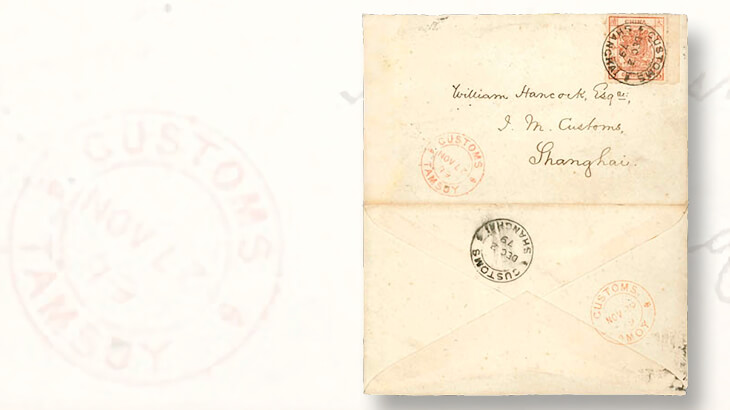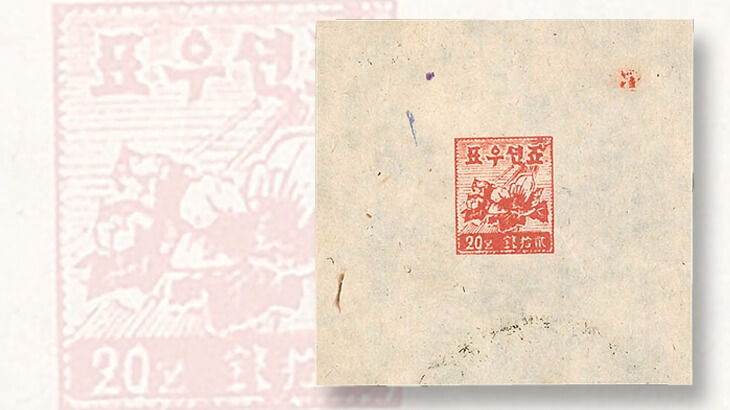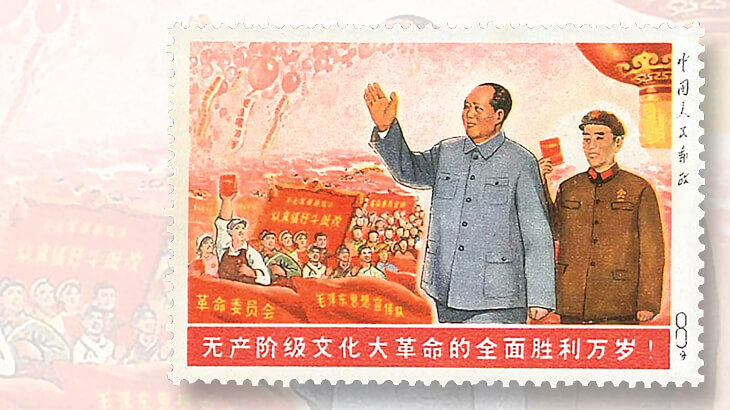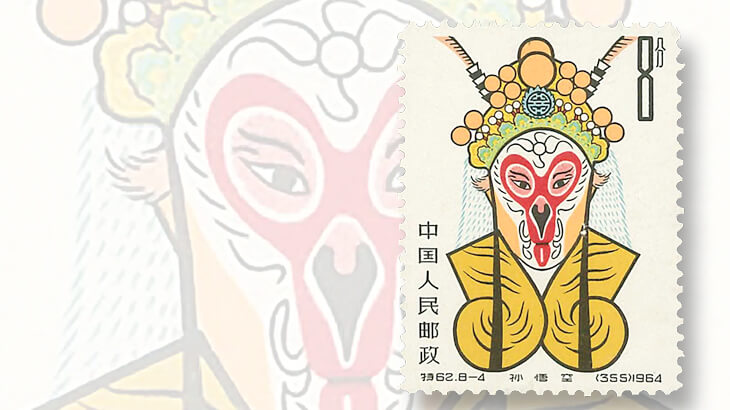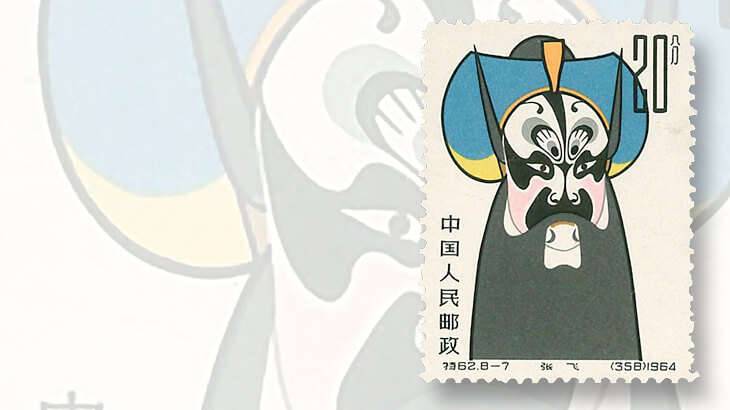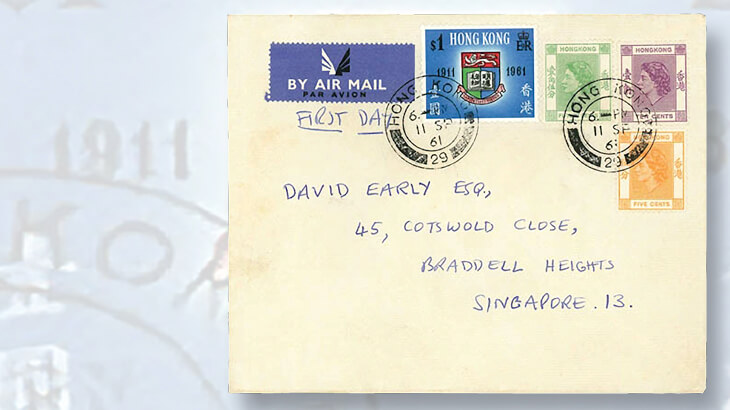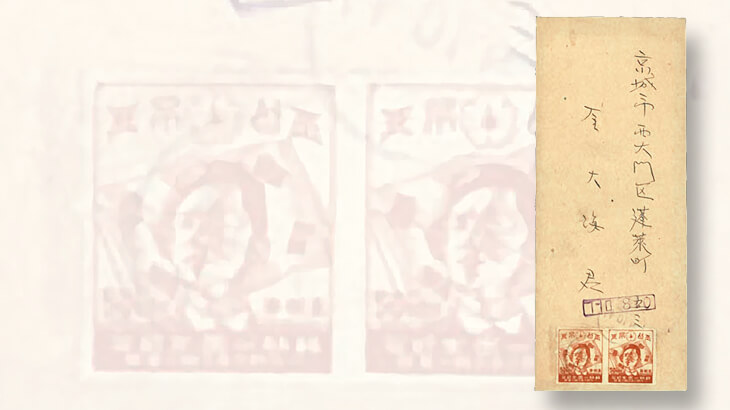Auctions
What sold during InterAsia’s sale of largest-ever public offering of North Korea?
By Matthew Healey, New York Correspondent
Worldwide auctions continued apace in July and August, with important philatelic holdings crossing the block in Hong Kong and New York, as well as at the American Philatelic Society’s annual Stampshow in Portland, Ore.
Here is one of five recent auctions we are recapping in our latest International Auction Roundup:
InterAsia held a major sale of China, Asia and worldwide stamps and postal history June 26-29 in Hong Kong, including what was said to be “the largest offering of North Korea ever to appear at public auction,” as well as important items from well-known specialists in Hong Kong and other areas.
The total realization for the four-day sale was over $54 million Hong Kong dollars (about US$7 million), some 45 percent beyond presale estimates.
Connect with Linn’s Stamp News:
Sign up for our newsletter
Like us on Facebook
Follow us on Twitter
Starting things off the first day were items from the T.S. Yang collection of China’s earliest issues of 1878-97.
A complete sheet of 25 of China’s first stamp, the 1-candareen “Large Dragon” of 1878 (Scott 1) in a yellow-green shade, was called “pristine” save for three hinge remainders in the top and bottom selvage. It sold for the equivalent of about $44,500, including the 15 percent buyer’s premium that InterAsia adds to all lots.
The sale also featured the only surviving cover from Taiwan franked with a Large Dragon stamp. This unique postal history artifact was sent from the Imperial Maritime customs office in Tamsuy (today spelled Tamsui) to William Hancock, a British official with the customs service, who was then stationed in Beijing.
Franked with a 3ca brown-red on thin paper (Scott 2) paying the domestic rate, the letter passed through Amoy (modern Xiamen) on the mainland. Although the letter is addressed to Shanghai, Hancock is known to have been stationed in Beijing at the time this letter was sent, in November 1879. It would have been carried to him there from Shanghai by an internal customs courier. The cover fetched $371,000.
China adopted a new currency in 1897: the silver yuan, comprising 100 cents. As new stamps were not yet ready, stamps from the 1894 issue marking the 60th birthday of Dowager Empress Tsz’e Hsi were overprinted with denominations in the new currency.
A scarce double-overprint error of the 10¢-on-9ca issue (Scott 35a) was offered in unused condition with part original gum. One of a lone pane of 20 produced, the stamp went for $47,500.
Rarities of the People’s Republic of China include a number of stamps that for one reason or another were prepared but not issued, and survive only in tiny numbers. One such case was a set of eight Theatrical Masks of the Beijing Opera, printed in 1964.
It is unclear why the set was not issued at the time; a very similar set came out in 1980. The original stamps, mentioned in a footnote after Scott 1581, can be identified by the presence of a tiny year date at bottom right.
The unissued 8-fen Monkey King, with tiny faults, sold for $96,400, while the “elusive” 20f Zhang Fei, also slightly faulty, brought a whopping $178,000. Both stamps are the examples illustrated in Yang’s Postage Stamp Catalogue of The People’s Republic of China.
Several examples of stamps prepared during the Cultural Revolution but shelved for political reasons also appeared in the InterAsia sale.
A splendid mint never-hinged example of the withdrawn 1968 8f “Entire Nation Is Red” stamp (Scott 999A), well-centered and fault-free, sold for $126,000. The stamp was hastily withdrawn from sale on its first day because the island of Taiwan is conspicuously not red on the map in the vignette, in glaring defiance of the Communist government’s stance that the island is an integral part of China.
Three postmarked examples of the withdrawn stamp, less well-centered and each exhibiting some degree of faults, went for prices ranging from $41,000 to $52,000.
Another unissued 8f stamp of 1968, depicting Chairman Mao and Marshal Lin Biao greeting a victory parade (illustrated and priced, but not listed, after Scott 999A in the Scott Standard Postage Stamp Catalogue) has been dubbed one of the “four philatelic treasures of the Cultural Revolution.” Never hinged but with some minor repairs, it sold for $71,200.
A group of Queen Elizabeth II-era Hong Kong errors was “keenly competed for with many exceptional realisations, reflecting the emergence of a new generation of important collectors,” according to a post-sale report by InterAsia.
These included a 1961 first-day cover with a $1 Hong Kong University commemorative stamp missing its gold-ink inscription (Scott 199a). Addressed to Singapore and franked together with three Queen Elizabeth definitives, the cover, one of just five FDCs to bear the error stamp, brought $26,700.
InterAsia’s unusual offering of North Korea stamps and postal history came from the international gold medal-winning collection of Taizo Maeda, and attracted interest from bidders around the world.
At the close of World War II, Korea, which had been under the thumb of Japan for three and a half decades until 1945, was occupied by the Soviet Union in the north and the other Allies, led by the United States, in the south. Several years of negotiations failed to produce a settlement for a unified nation, and in 1950 war broke out between the two sides. The stalemate from that conflict continues to this day.
The first postage stamps of the Communist North appeared in 1946, when the future Democratic People’s Republic was still a Soviet zone of occupation. The first issue consisted of crudely lithographed designs showing a hibiscus flower (or the hibiscus known as rose of Sharon; the drawing is unclear) on the 20-chon value (Scott 1), and the scenic Diamond Mountains, or Mount Kumgang, on the 50ch (2-5).
Rare die proofs of the 20ch design on thin wove paper, in red and in apple green, went for $4,750 and $3,000, respectively. The red proof is close to the color of the issued stamp, whereas the example in apple green is somewhat enigmatic, as that color was used for the 50ch instead.
Early North Korea stamps were reprinted in the mid-1950s for sale to collectors overseas. An apple green version of the 20ch appeared at that time, perhaps inspired by this early proof.
A used example of the 20ch red, showing part of a circular datestamp clearly reading “1946,” was believed by Maeda to be the only known example postmarked with the full Gregorian-calendar year date. It sold for $267.
North Korean postmarks from 1946 tend to include either an abbreviated Western-style “46,” or simply a “2,” signifying the second year of liberation from Japanese rule. Even prior to the outbreak of the Korean War, the exchange of mail between North and South was limited to a single handover point. There were 165 such official exchanges between 1946 and 1950.
A 1946 cover from Pyongyang to Seoul, franked with a horizontal pair of 50ch Kim Il Sung stamps (Scott 6), traveled on one such handover, according to the description in the InterAsia sale: “This mail is presumed to have gone through the 14th North-South mail exchange that took place on 12 Oct. at Kaesong, after a hiatus of nearly three months because of a cholera outbreak north of the 38th parallel.”
The southern half of the Korean peninsula by then was already considered a foreign destination, and the cover bears a Soviet-style boxed violet censor handstamp. It sold for just over $3,500.
Keep reading our International Auction Roundup:
Czechoslovakia propaganda issue sold at Regency-Superior auction
Items spotlighting obscure World War II conflicts highlight Cherrystone sale
OSS Hitler propaganda sheet brings $17,250 at Harmer-Schau sale
Scarce Australian error stamp tops Harmers International auction
MORE RELATED ARTICLES
Headlines
-
US Stamps
Oct 7, 2024, 12 PMVasiliauskas named president of Mystic Stamp Co.
-
US Stamps
Oct 6, 2024, 5 PMApgar souvenir card available
-
US Stamps
Oct 6, 2024, 4 PMFirst Continental Congress and U.N. stamps receive Scott catalog numbers
-
World Stamps
Oct 5, 2024, 1 PMCanada Post continues Truth and Reconciliation series
